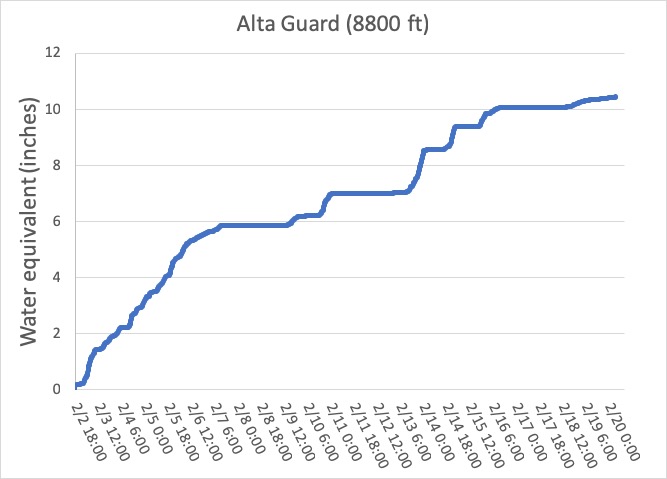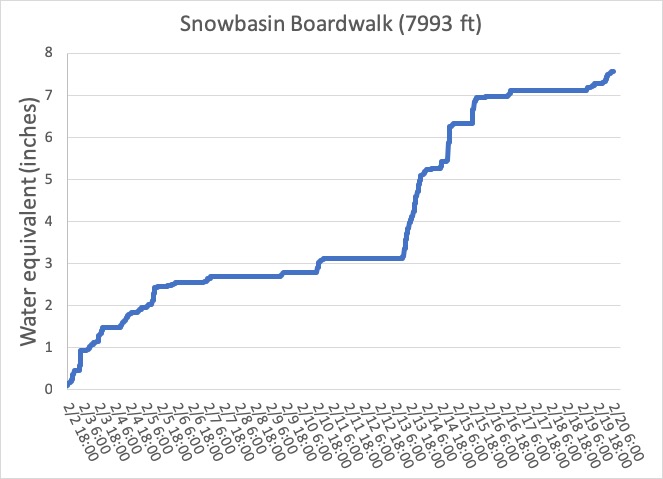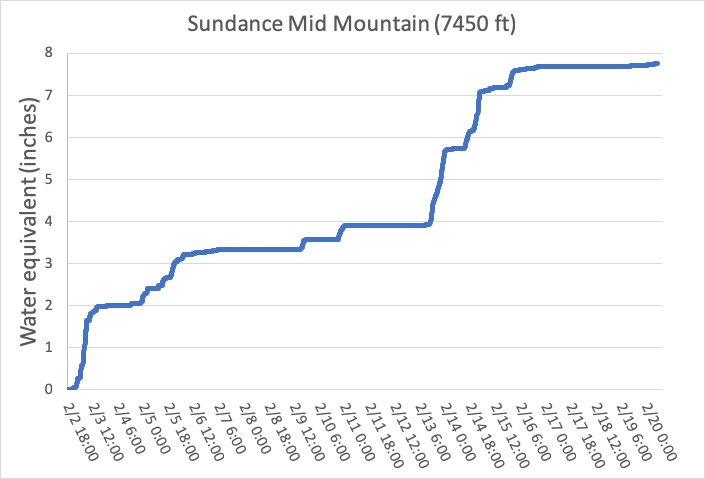
Mark Staples
2015-2024 - Director, Forest Service Utah Avalanche Center
I made these for myself to get a handle on all the storms and snowfall in the month of February.
Snowfall is harder to track and compare from one storm to another than the water amounts. If you take a certain amount of snow and melt it, these numbers represent the depth of water you would have. Some snow can be dense and heavy. Other snow can be light and less dense. Typically an inch of water produces 10-12 inches of snow. If it is colder, it makes more light snow.
To put these numbers in perspective - 1 inch of water covering a football field would weigh a quarter million pounds (250,000 lbs).
From Feb 2 to Feb 20, Alta guard has received 10.43 inches of water in the form of snow. Over an area of a football field, that snow weighs 2.6 million pounds.
Avalanches care about the water contained in snow because it gives a better sense of how much that snow weighs. Weight correlates to stress. The more stress something has the more likely it is to break. When the snowpack breaks, we get an avalanche. What makes snow different is that its properties change. This means that the snowpack can be stressed and unstable, but through time it gets stronger and can support the load of snow.
Read more about measuring snow water equivalent from the NRCS.
Data from Alta Guard

Data from Snowbasin's Boardwalk site.

Data from Sundance's Mid Mountain Site







